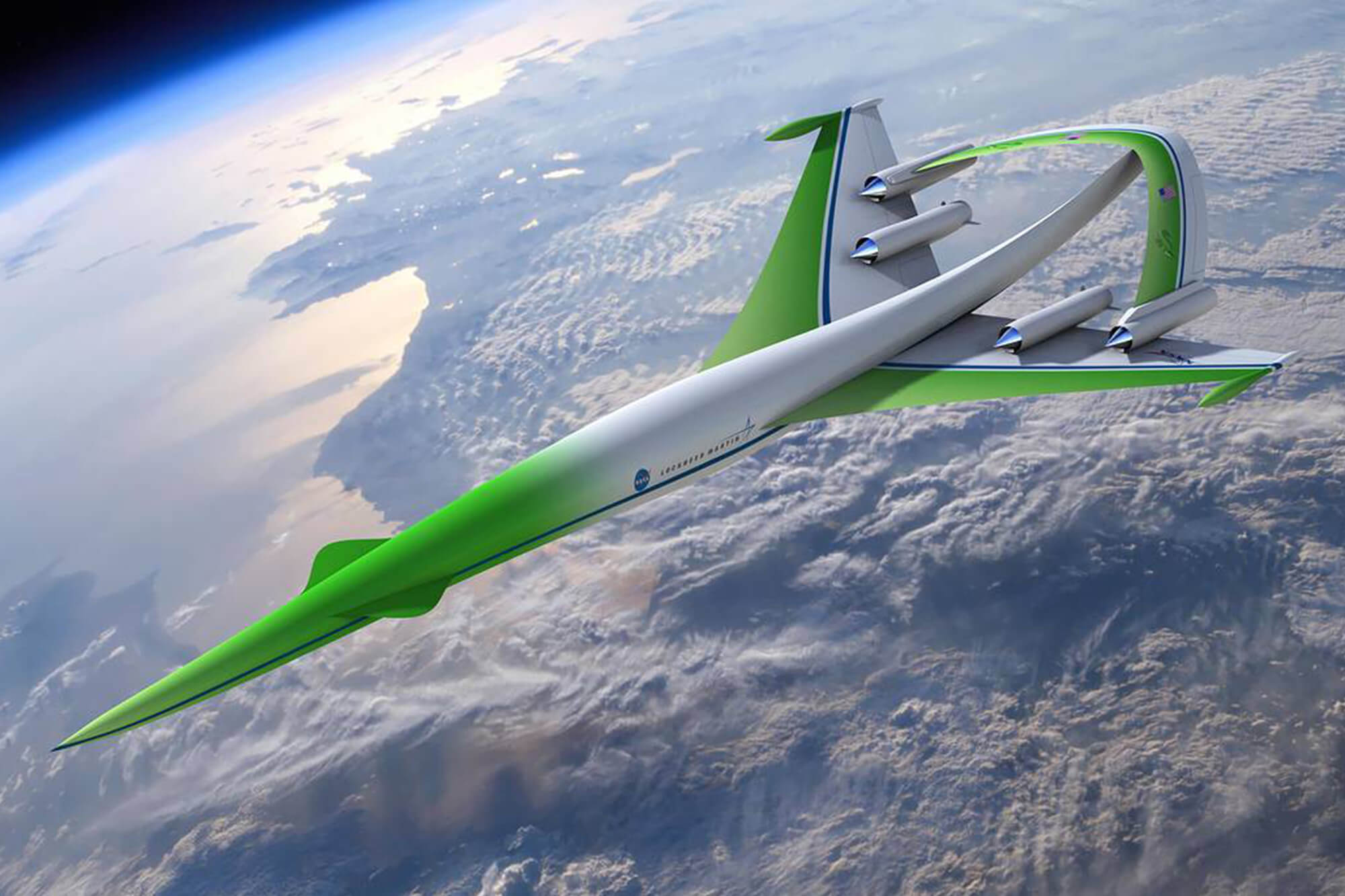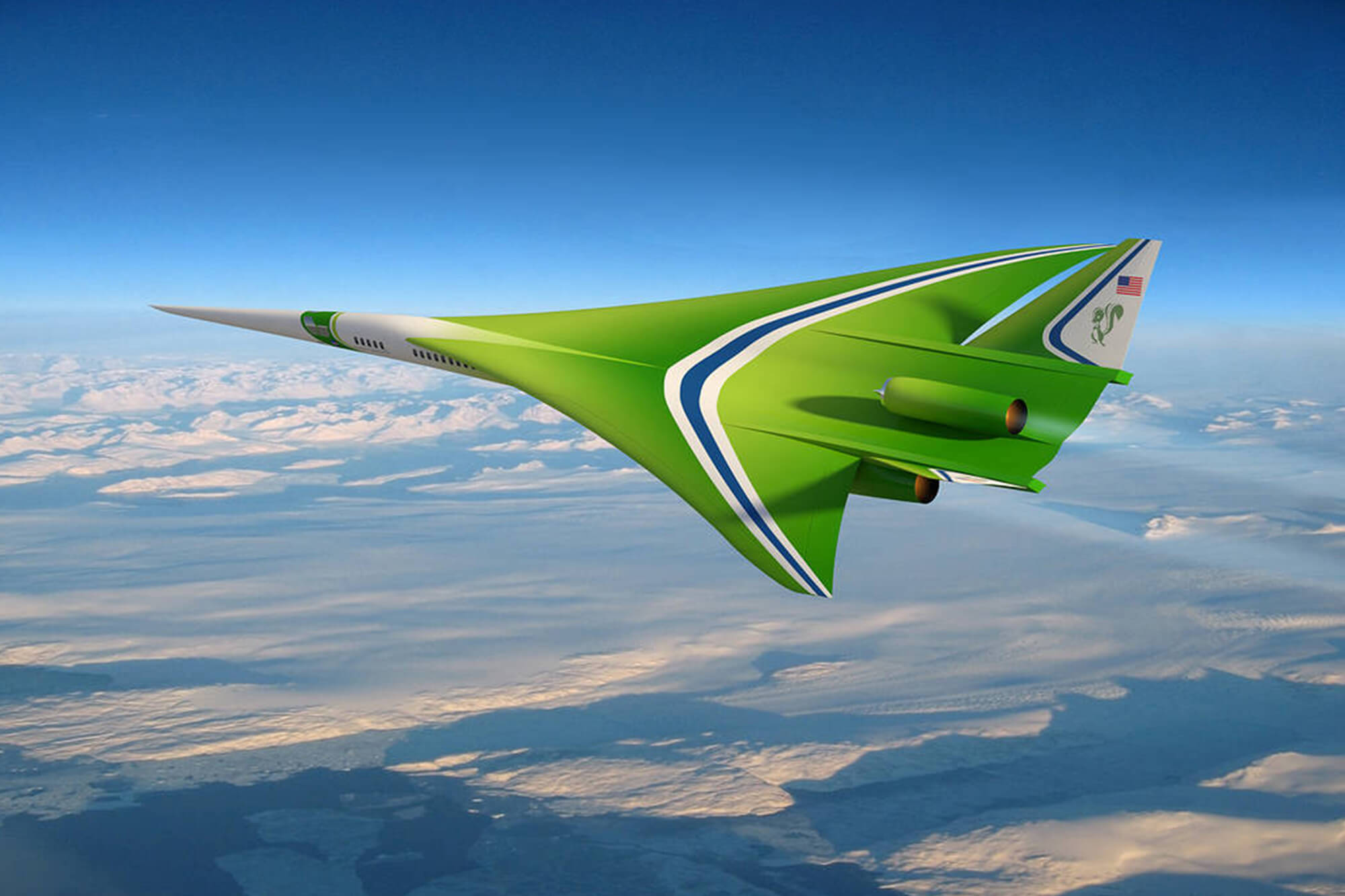

Oct. 19, 2019
FAA and NASA are paving the way for new supersonic aircraft.
Despite concerns that the age of civil supersonic transport (SST) aircraft had ended with the Concorde’s final flight in 2003, efforts to develop a market-viable SST never waned completely. Now, several manufacturers aim to introduce next-generation supersonic business aircraft and commercial airliners as soon as 2025.
Several factors affect development of supersonic aircraft, including operating costs and environmental impact. However, concerns over noise – both when operating near airports, and particularly as they travel at supersonic speeds – have been the greatest factors hindering such designs.
Noise concerns led the FAA in 1973 to prohibit operating civil aircraft above Mach 1 in the United States when over land or near coastal regions, a restriction that remains in place today. However, solving the sonic boom problem may also not be as insurmountable as once believed, with manufacturers working on models capable of traveling faster than the speed of sound much more quietly.
The FAA is pursuing solutions to the SST noise challenge, driven in part by a congressional mandate to develop policies for certification and operation of supersonic aircraft as part of the FAA Reauthorization Act of 2018 and with strong support from the White House.
“Innovation is a priority for this administration, and we see great potential for supersonic aircraft,” said Kevin Welsh, executive director for the agency’s office of Environment & Energy. “We’re seeing a lot of new and exciting technologies, and our focus is how to enable to those advances and bring them safely to market and to the existing airspace, while also taking into account their environmental impacts.”
Welsh’s office has taken the lead on current SST regulatory development within the FAA since the regulatory challenges ahead are primarily related to noise.
“That [noise] is where the design decision needs to be made when developing an aircraft capable of supersonic flight,” declared Welsh. “Both the aircraft itself and its engine will need to be much quieter than Concorde. At the same time, the FAA understands supersonic aircraft should not be automatically held to the same noise standards as subsonic aircraft.”
Earlier this year, the agency issued an NPRM to help develop the emerging SST sector by streamlining procedures for companies to obtain special flight authorizations for testing proposed supersonic air-craft. A second NPRM to be issued by March 31, 2020 will address noise certification issues for such aircraft in light of the ongoing development of methods to reduce or eliminate sonic booms.
NOT A ‘BOOM’ BUT A ‘THUMP’
NASA is leading efforts to develop design methods and technologies that will enable the development of aircraft that can fly faster than the speed of sound without creating a sonic boom sound at ground level. In November 2018, the agency conducted a study off the coast of Galveston, TX using an F/A-18 fighter jet to mimic the sound expected to be generated by such quiet supersonic designs.
Shaping an aircraft to minimize sonic booms isn’t a new idea, with concepts developed in the late 1960s to manipulate the two distinct signal waves generated while flying at supersonic speeds. NASA’s Low-Boom Flight Demonstration (LBFD) mission continues this work today.
“From NASA’s perspective, the barrier to the success of SSTs is the fact that supersonic flight over land remains prohibited due to sonic booms,” said LBFD Mission Manager Peter Coen. “However, we’re looking closely at designs that could produce a sound at ground level more like a quiet ‘thump’ than a loud boom.”
In April 2018, the agency awarded a contract to Lockheed Martin to develop the X-59 Quiet SuperSonic Technology demonstrator (QueSST) test aircraft. By early 2023, NASA intends to start a series of community overflight tests to gauge people’s response to noise levels generated by the sleek X-plane, with the aim of reducing sonic booms to as low as 75 Perceived Level decibels (PLdb) at ground level.

If validated, such low-boom designs will look quite different from the aircraft we’ve grown accustomed to seeing on airport ramps over the past 50 years.
“To achieve low-boom acoustic signatures means you have to stretch out the aircraft, resulting in a very slender, long and sleek fuselage,” said NASA Commercial Supersonic Technology Project Manager Lori Ozoroski. “That will also affect other design aspects. For example, as with the X-59, you may not have a forward wind-screen, but instead an external vision system.”
While unusual, Coen added that such camera-based vision systems bring other benefits, including the ability to integrate ADS-B data, traffic and infrared visibility onto a single display.
“I’m not sure how else we could do it,” said Coen. “You can’t see through a long, sloped windscreen, which is why Concorde’s drooped for takeoff and landing. Today’s designs are so highly integrated that adding a similar
‘droop’ capability would be a challenge.”
Aircraft propulsion systems also need to evolve. “High-bypass turbofans are getting better and better in terms of both fuel efficiency and reduced noise on takeoff and landing, but as speeds increase, they create more drag; that’s why fighter jets use low-bypass engines,” said Jon Seidel, chief propulsion systems analysis engineer at NASA’s Glenn Research Center. “Most of our work on the propulsion side involves ways to reconcile those two concepts.”
One method for finding the optimal SST propulsion system is to scale back cruising speeds for a next-generation SST. Whereas Concorde could travel faster than Mach 2, many new designs are optimized for speeds between Mach 1.4 and 1.8.
“That appears to be the sweet spot for performance, efficiency and quietness,” Seidel explained, “and looks to be achievable with near-term engine designs able to adjust power to optimize and mitigate sideline noise without compromising performance.”
EMISSIONS AND EFFICIENCY
Emissions and efficiency are other important considerations for proposed SSTs. Seidel noted that NASA has invested in new-generation combustor technologies with “lean burn” characteristics, as well as use of sustainable aviation fuels to further reduce a next-generation SST’s carbon footprint. Eventually, advanced laminar flow techniques, combined with active flutter suppression to reduce structural weight, will be utilized on second- and third-generation super-sonic jet designs.
“From what we’ve seen in industry studies, there’s a viable market for a small number of supersonic aircraft in the near-term,” Seidel continued. “We’ll need better solutions and environmental technologies as fleet size grows, which is where those next-gen technologies come in.”
While challenges remain, the fact that engineers are already considering such future designs is a strong indication that supersonic aircraft are here to stay.
“NASA strongly believes that faster transportation is a game-changer for the future of aviation,” Coen concluded. “We’re working to make that happen.”
NBAA PLANNING SUPERSONIC AIRCRAFT SESSION AT NBAA-BACE
A Business Aviation Insider-sponsored session at this year’s NBAA Business Aviation Convention & Exhibition (NBAA-BACE) will delve deeper into the issues affecting the next generation of supersonic travel. On Tuesday, Oct. 22 from 1 to 2 p.m., “Supersonic Jets: Emerging Reality or Same Old Hype?” will feature a panel of technical experts, regulatory officials and other stakeholders who will discuss the feasibility of supersonic business aircraft. Review the full NBAA-BACE program schedule at nbaa.org/2019.


 International Business Aviation Council Ltd.
International Business Aviation Council Ltd.